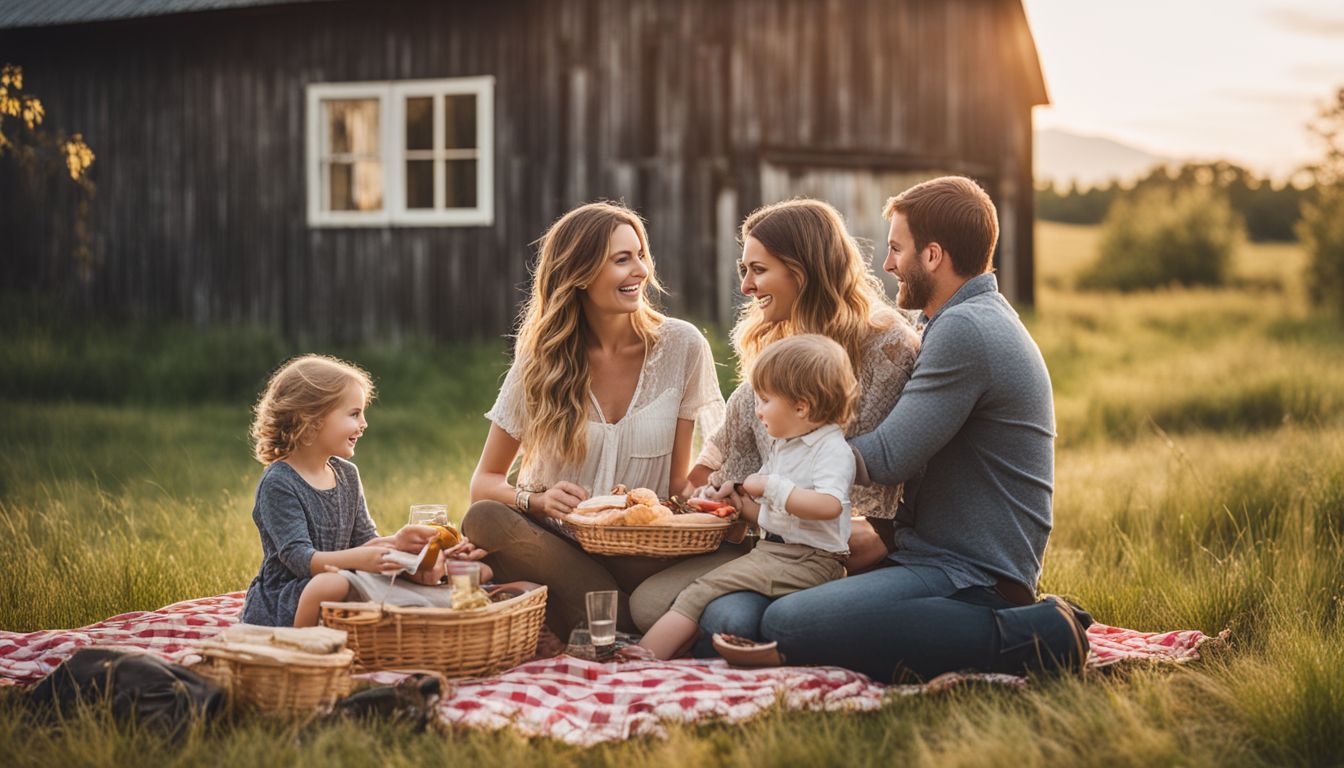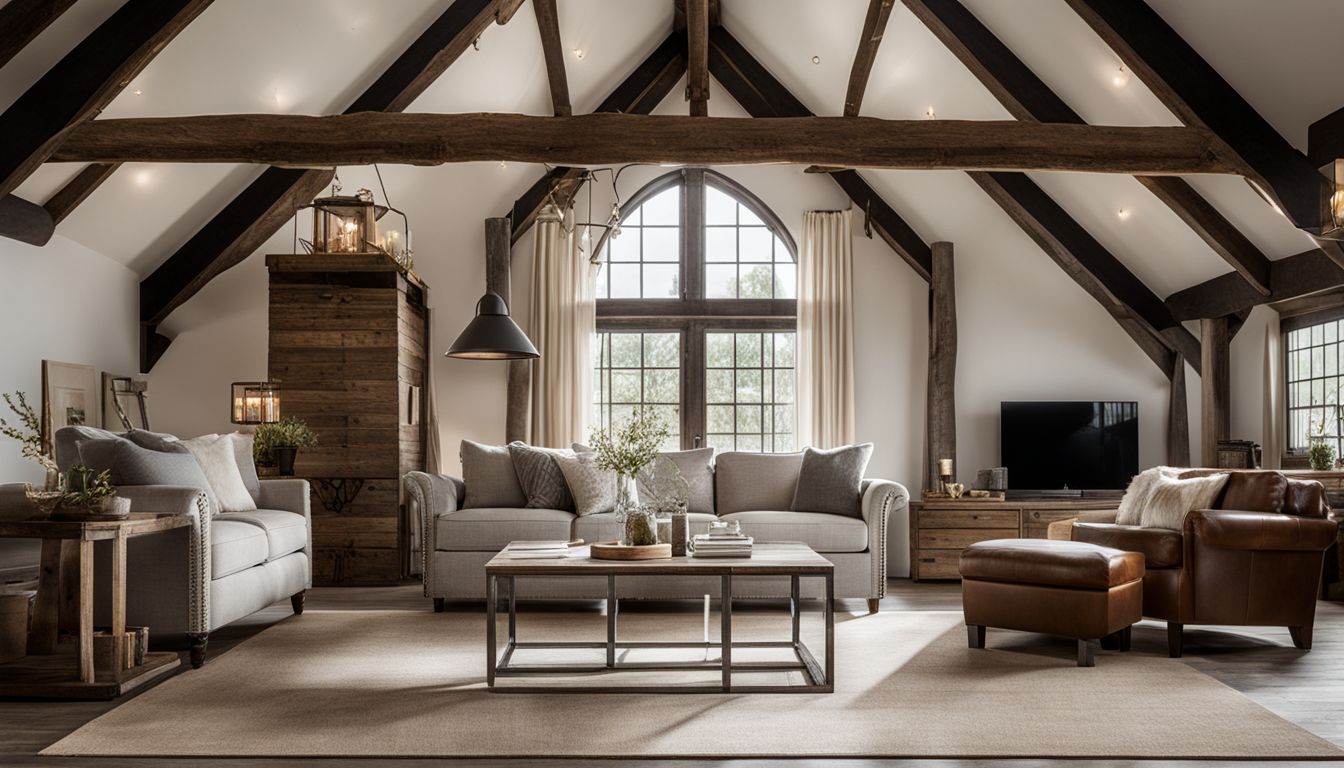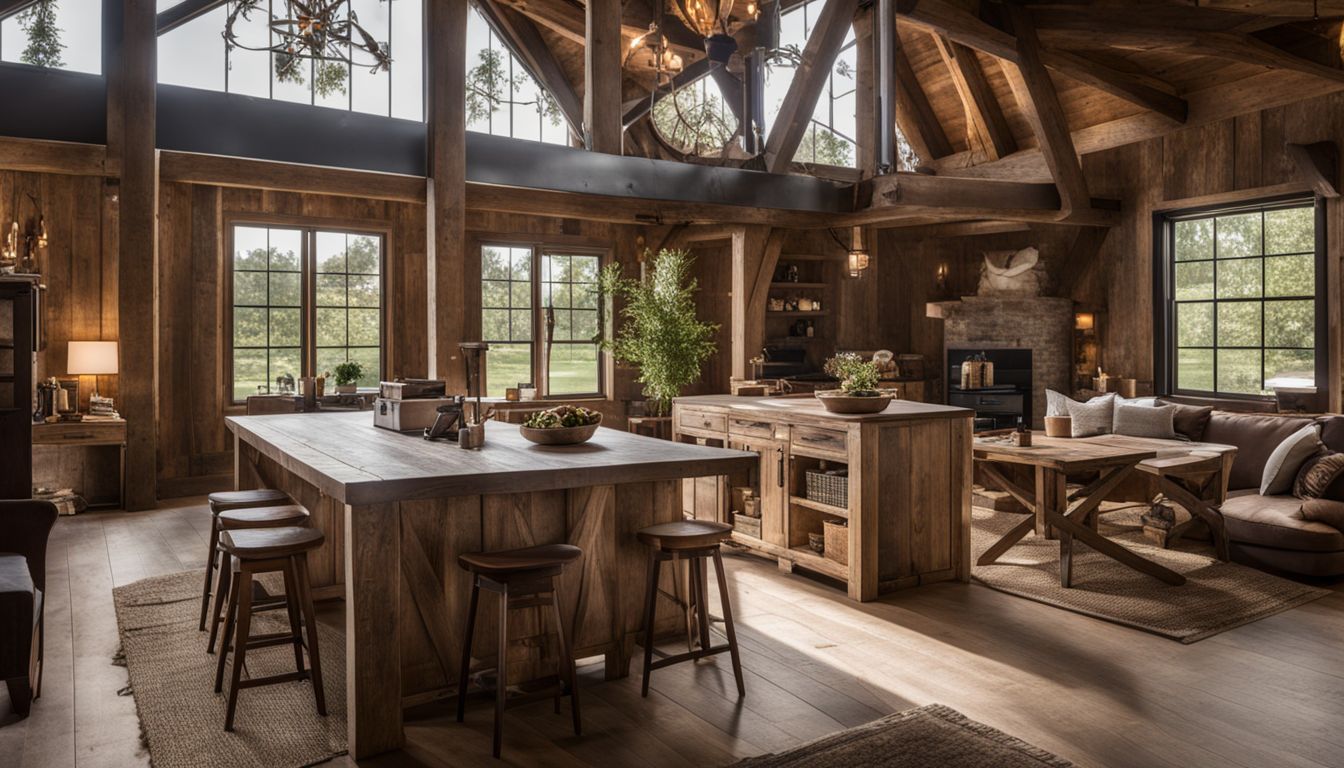
By: Alternative Habitat Blueprint
Barn Turned House: Family Home Design in a Century-Old Converted Barn
Finding the perfect family home can be hard. The Burton family chose a unique path by purchasing a historic red barn. This article will guide you through turning an old barn into your dream home, showcasing how it’s done with style and practicality.
Get ready to be inspired!
Key Takeaways
- Converting a barn into a home mixes old charm with modern comfort, costing between $10 and $50 per square foot.
- The Burton family worked with Marrs Developing to turn a historic red barn into a cozy home featuring vaulted ceilings, bedrooms, a slide, and more.
- Choosing the right style involves considering your needs and balancing preserving the barn’s character with updating it for today’s living.
The Concept of Converted Barn Homes

The concept of converted barn homes brings old structures back to life, turning them into unique living spaces. This trend, known as “barndominiums,” mixes rustic charm with modern comforts.
People choose old barns made of wood, stone, and metal for their strong character and history. These buildings often have wide-open spaces inside, which are perfect for creating large living areas, cozy bedrooms, and expansive kitchens.
The process involves keeping some original features like wooden beams and barn doors while adding new elements such as modern insulation and climate-controlled HVAC systems.
Converting a barn into a home isn’t just about preserving an architectural piece; it’s about making a personal statement through design. Costs can range from $10 to $50 per square foot—making budget planning a key step in the transformation journey.
Hiring skilled workers like contractors and electricians ensures that the job meets building codes and fulfills your vision for the space. This creative approach allows families to craft homes that reflect their tastes while paying homage to historical craftsmanship.
Up next: Five steps to convert a barn into your dream home.
Five Steps to Convert a Barn into a Home

Determining your budget is the first step. Then, choose a style that suits your taste and needs. Next, carefully plan and design the space to make it functional and beautiful. After that, focus on renovating the structural elements of the barn.
Finally, bring in the necessary heating, cooling and plumbing systems for a comfortable living space.
Determining Your Budget
Start by looking at your finances to see how much money you have for this project. Converting a barn can cost between $10 and $50 for every square foot. This means if your barn is big, the total price will be high.
Make sure you plan well to keep track of all expenses and avoid surprises.
Think about all costs involved – from buying materials like wood and stone to hiring help for complex tasks such as plumbing or adding a heating system. Don’t forget about possible updates to the roof or floors either! Setting aside extra cash for unexpected costs is wise, so you stay within your budget while making your dream home come true.
Choosing Your Style
Selecting the right style for your barn home is a journey of creativity. First, consider your family’s needs and interests. Do you dream of a cozy farmhouse with a big fireplace and oak beams? Or does a modern farmhouse with spacious rooms and sleek lighting call to you? Both options hold distinct charm.
Your choice shapes everything from kitchen design to living room layout.
Next, dive into the specifics—like whether to keep original stone walls or add new, large windows for more natural light. Each decision impacts the look and feel of your barn turned house.
I faced these choices head-on during my own renovation project. Balancing between preserving the barn’s character and updating it for modern living was key.
Now let’s talk about designing your space.
Designing Your Space
Selecting the right furniture and layout is crucial in designing your space. Consider the original barn structure for inspiration – showcasing exposed ceiling beams can add character.
When choosing pieces, opt for sturdy materials that can withstand fluctuations in temperature. Add warmth with rugs and textiles to soften the industrial feel.
Incorporating energy-efficient heating and cooling systems is important in maintaining a comfortable atmosphere year-round. Utilize natural light through large windows or skylights to brighten up the space, reducing the need for excessive artificial lighting.
Highlights of a Family Home Design in a Century-Old Converted Barn
The Burton family bought a historic red barn and converted it into a modern family home with the help of the Marrs Developing team. The renovated barn features open vaulted ceilings, two bedrooms, a bathroom, living and dining space, along with a kitchen.
It also includes entertaining elements like a slide, rock climbing wall, and shuffleboard table. Outside, there’s an inviting screened-in patio for summer evenings and a fire pit for cozy nights.
The exterior transformation involved replacing the original oak siding with engineered wood board-and-batten siding and adding traditional front doors. A grand entryway was created to welcome guests while maintaining the century-old charm of the barn’s structure.
Additionally, black paint gave it a dramatic look along with new lighting fixtures and an all-glass garage door. The interior design boasts stainless steel appliances in the kitchen complemented by warm barn wood on the ceiling while green paint accents add character to the cabinets creating an open concept space perfect for modern-day living.
Conclusion
In conclusion, turning a century-old barn into a family home can be an exciting and creative venture. With careful planning and design considerations, it’s possible to transform a historic structure into a modern living space that captures the essence of the original building while meeting the needs of a contemporary lifestyle.
From determining your budget to choosing your style and designing your space, there are five key steps to follow in converting a barn into a welcoming residence. By embracing the unique features of an old barn and adding modern touches, families can create homes that are both functional and full of character.